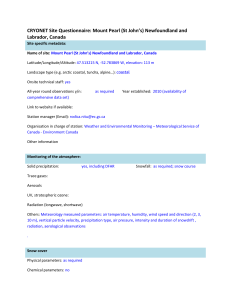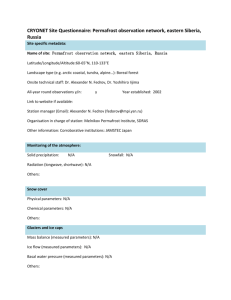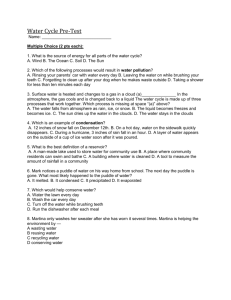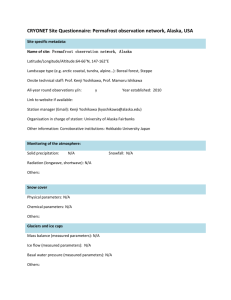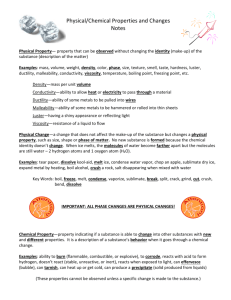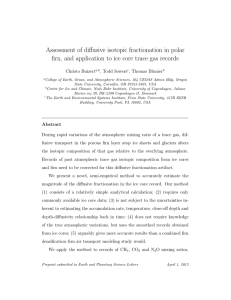Activity File (PDF - 634KB)
advertisement
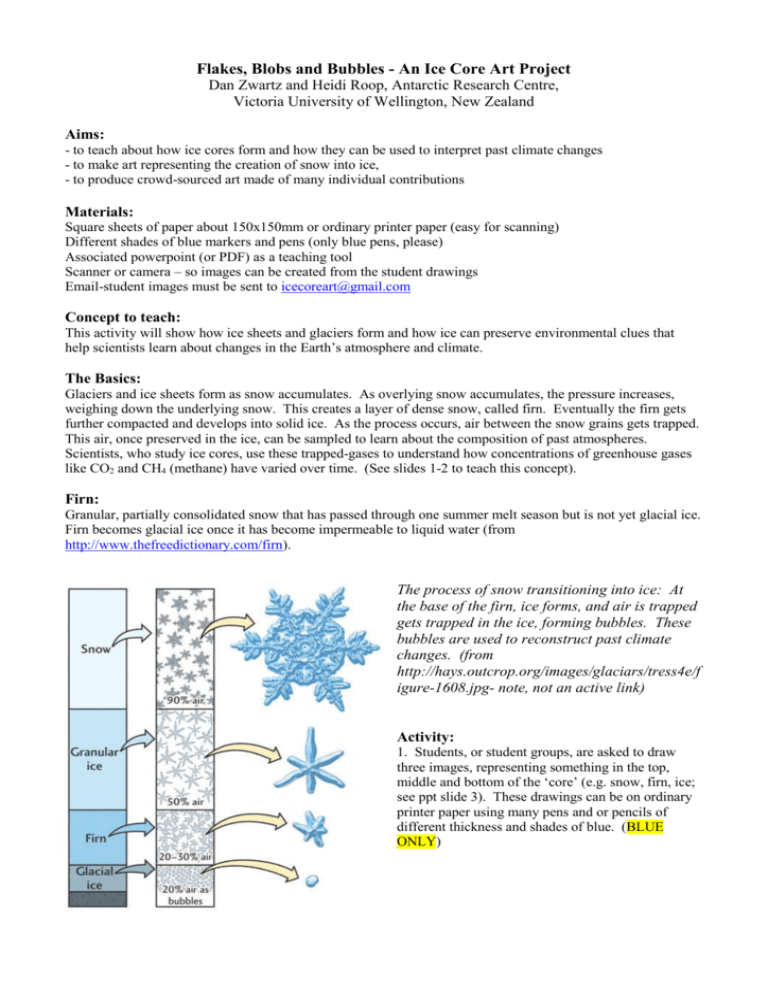
Flakes, Blobs and Bubbles - An Ice Core Art Project Dan Zwartz and Heidi Roop, Antarctic Research Centre, Victoria University of Wellington, New Zealand Aims: - to teach about how ice cores form and how they can be used to interpret past climate changes - to make art representing the creation of snow into ice, - to produce crowd-sourced art made of many individual contributions Materials: Square sheets of paper about 150x150mm or ordinary printer paper (easy for scanning) Different shades of blue markers and pens (only blue pens, please) Associated powerpoint (or PDF) as a teaching tool Scanner or camera – so images can be created from the student drawings Email-student images must be sent to icecoreart@gmail.com Concept to teach: This activity will show how ice sheets and glaciers form and how ice can preserve environmental clues that help scientists learn about changes in the Earth’s atmosphere and climate. The Basics: Glaciers and ice sheets form as snow accumulates. As overlying snow accumulates, the pressure increases, weighing down the underlying snow. This creates a layer of dense snow, called firn. Eventually the firn gets further compacted and develops into solid ice. As the process occurs, air between the snow grains gets trapped. This air, once preserved in the ice, can be sampled to learn about the composition of past atmospheres. Scientists, who study ice cores, use these trapped-gases to understand how concentrations of greenhouse gases like CO2 and CH4 (methane) have varied over time. (See slides 1-2 to teach this concept). Firn: Granular, partially consolidated snow that has passed through one summer melt season but is not yet glacial ice. Firn becomes glacial ice once it has become impermeable to liquid water (from http://www.thefreedictionary.com/firn). The process of snow transitioning into ice: At the base of the firn, ice forms, and air is trapped gets trapped in the ice, forming bubbles. These bubbles are used to reconstruct past climate changes. (from http://hays.outcrop.org/images/glaciars/tress4e/f igure-1608.jpg- note, not an active link) Activity: 1. Students, or student groups, are asked to draw three images, representing something in the top, middle and bottom of the ‘core’ (e.g. snow, firn, ice; see ppt slide 3). These drawings can be on ordinary printer paper using many pens and or pencils of different thickness and shades of blue. (BLUE ONLY) Here is an example of what type of things students can draw. Remember, no two snowflakes are identical and bubbles take on many forms. Encourage creativity! Doing a quick Google image search for air bubbles and snowflakes will yield images that might help students be creative, particularly for students unfamiliar with snow. 2. The drawings are collected, scanned into digital images and compiled. Depending on resources available, the drawings could be photographed with a digital camera, or used in montages in paper form. Either through scanning or photographed, once images are in electronic form (jpg) the images need to be emailed to icecoreart@gmail.com 3. All of the images received from around the world during Polar Week will be compiled into a final composite image to create a ‘global ice core’. The compiled images will be graded by color and density to simulate the creation of ice from snow. Additional mosaics of polar-themed images such as snowflakes, penguins, etc. will also be created. The images will be made available online on the APECS website for download. The composite will be posted at the end of Polar Week. Students can then try to identify their contribution to this ‘global ice core’ art project. Example of a ‘global ice core’ Example of a composite mosaic Additional resources for teachers to help explain, or extend this activity may be found on these websites: http://www.its.caltech.edu/~atomic/snowcrystals/primer/primer.htm SnowCrystals.com was created by Kenneth G. Libbrecht, Caltech professor of physics. The Morphology Diagram might be of particular significance http://nsidc.org/cryosphere/quickfacts/icesheets.html for more information on ice sheet formation and significance. http://snowflakebentley.com/bio.htm for a history connection about Wilson Bentley who was the first person to photograph a single snowflake in 1885. That site also has a simple snowflake matching game that might be fun for younger students- http://www.snowflakebentley.com/match.htm


